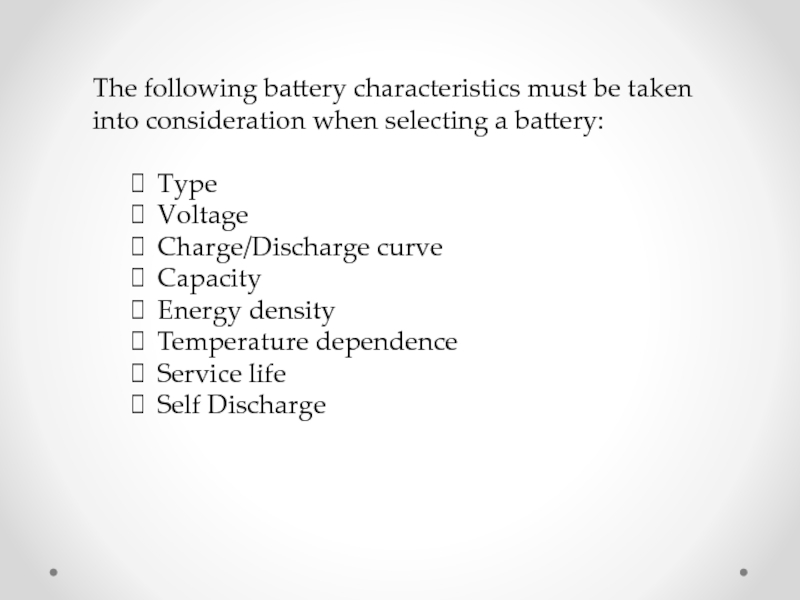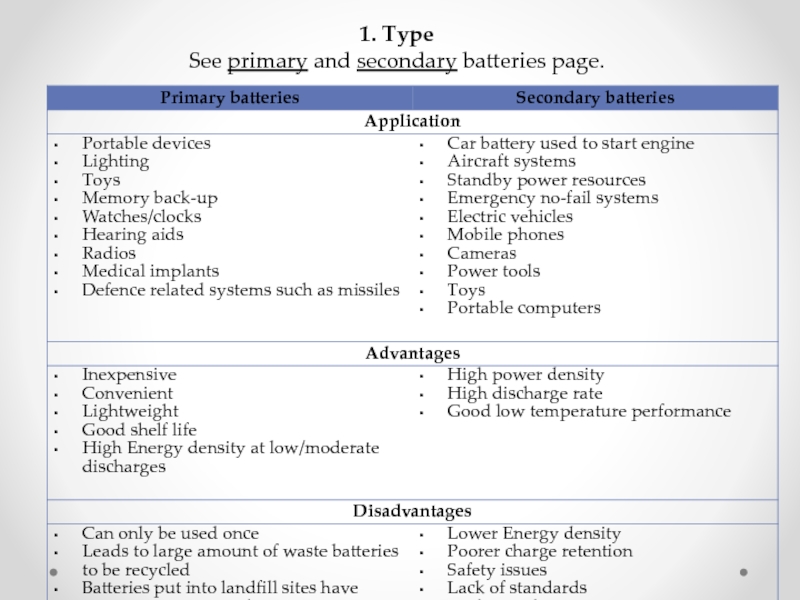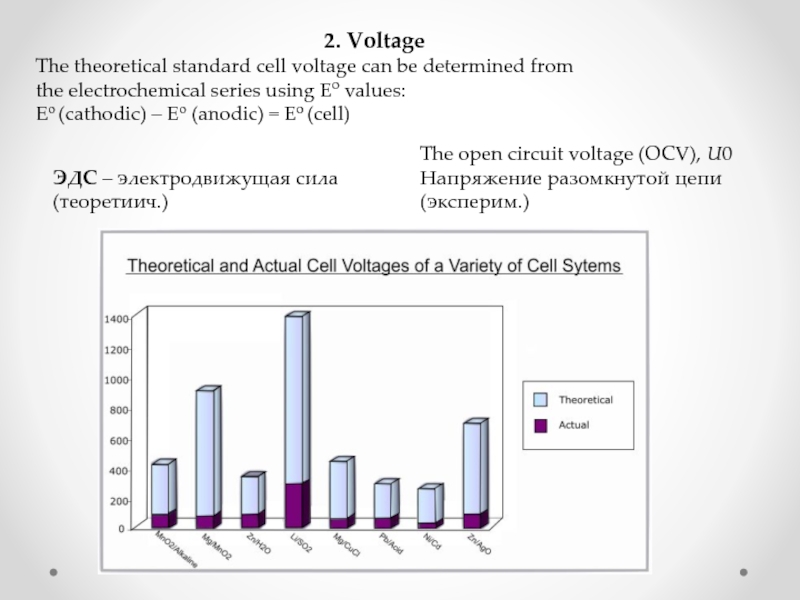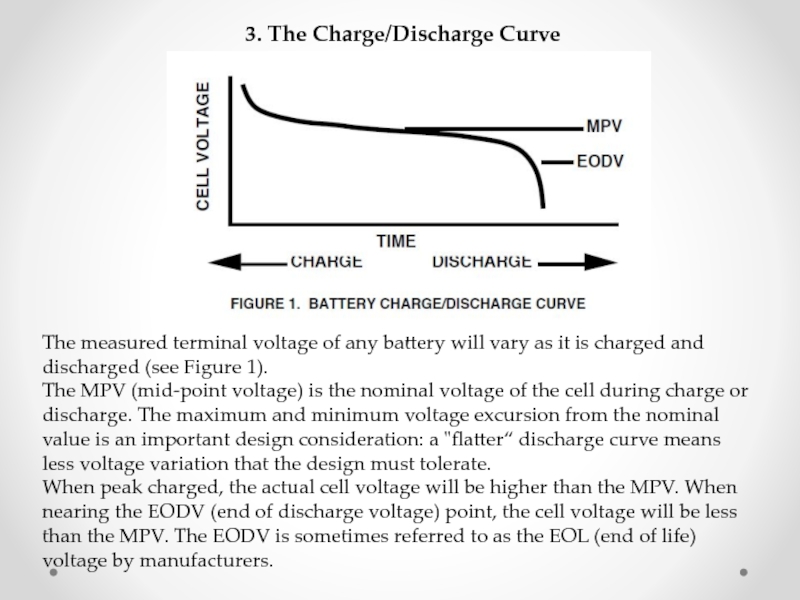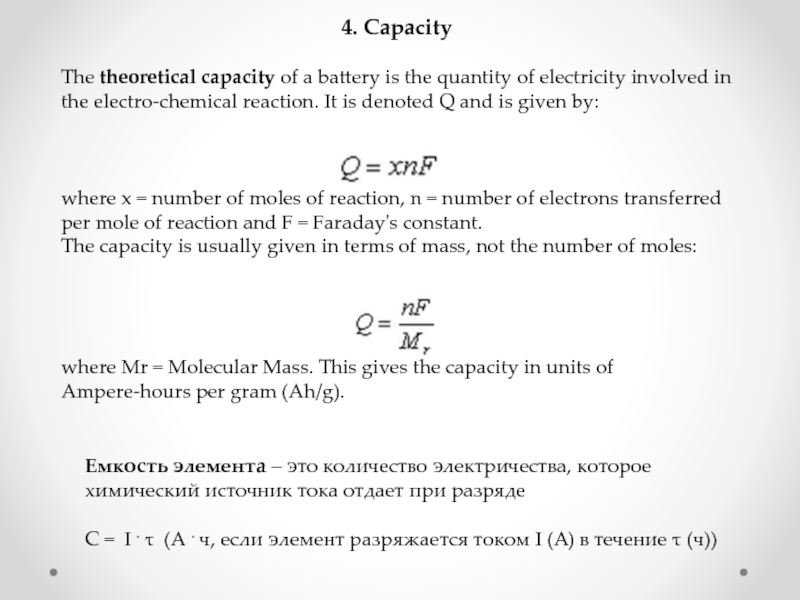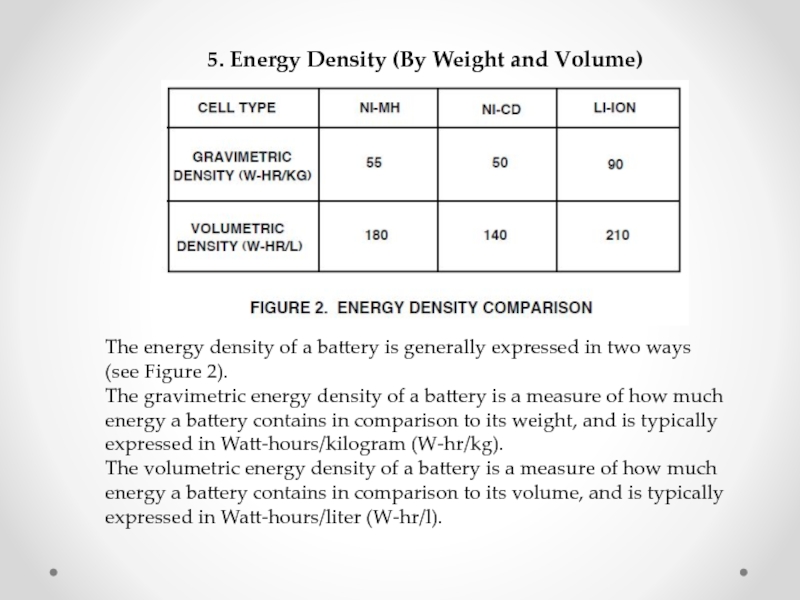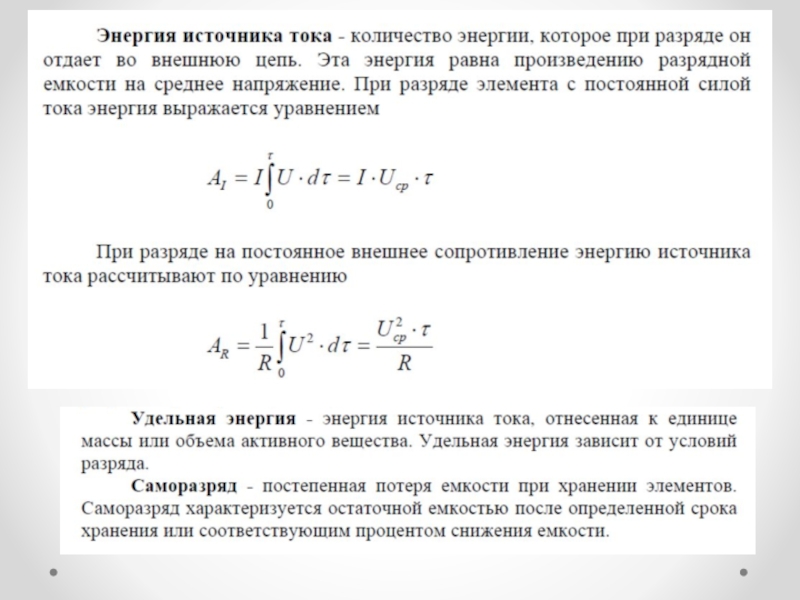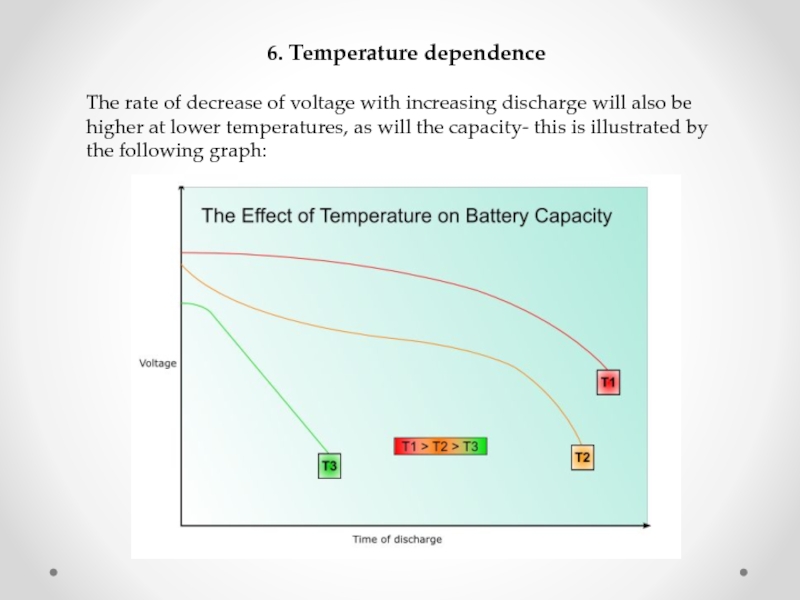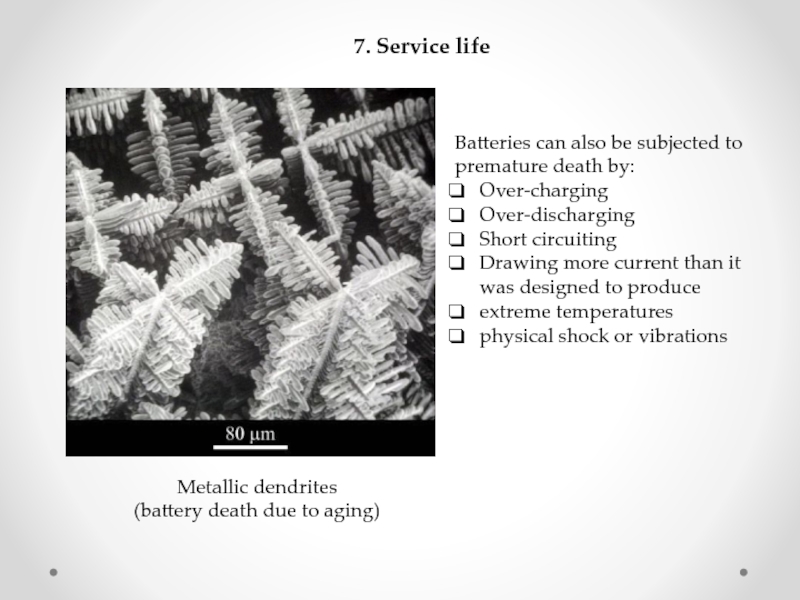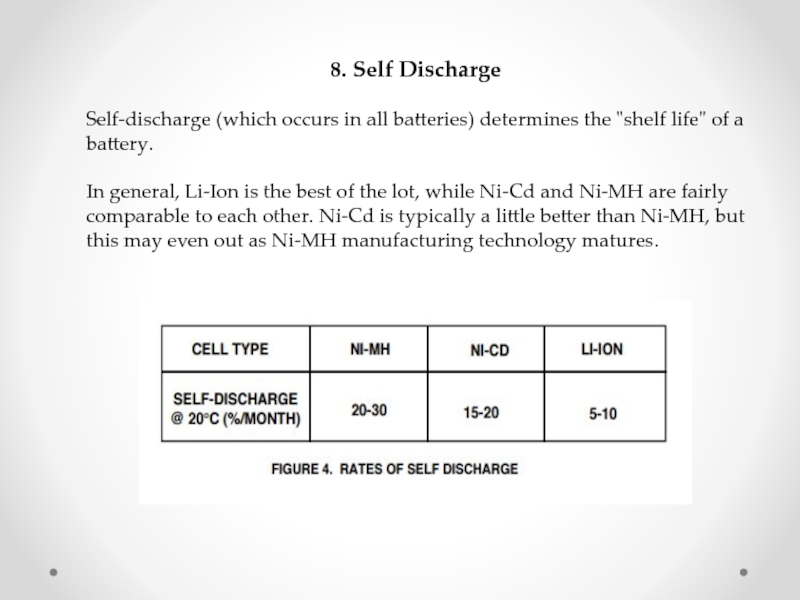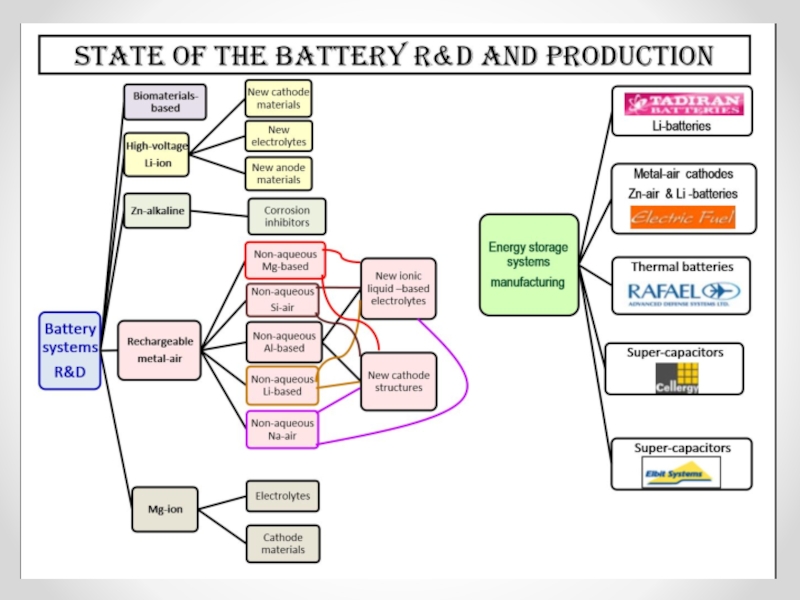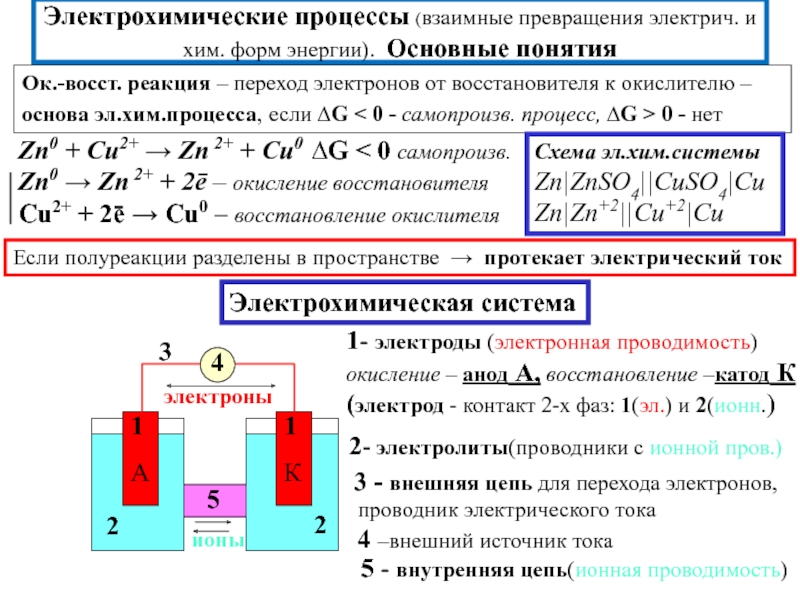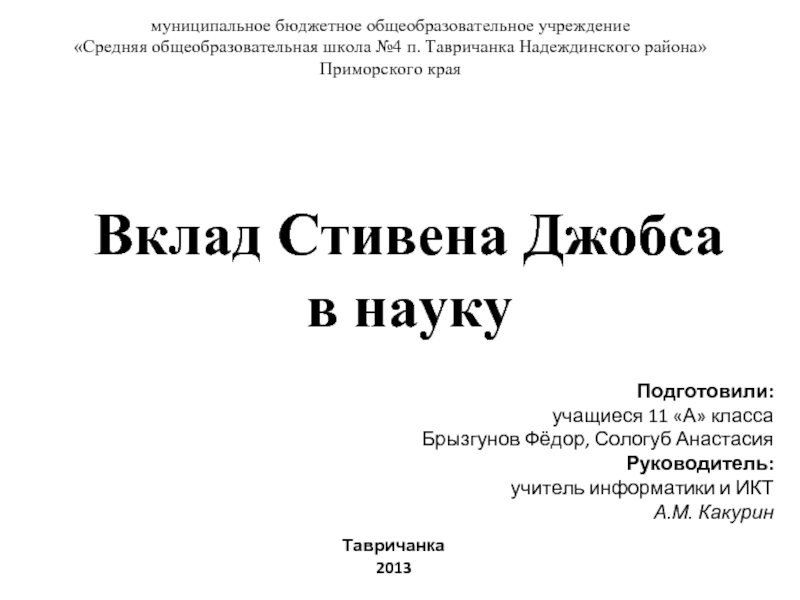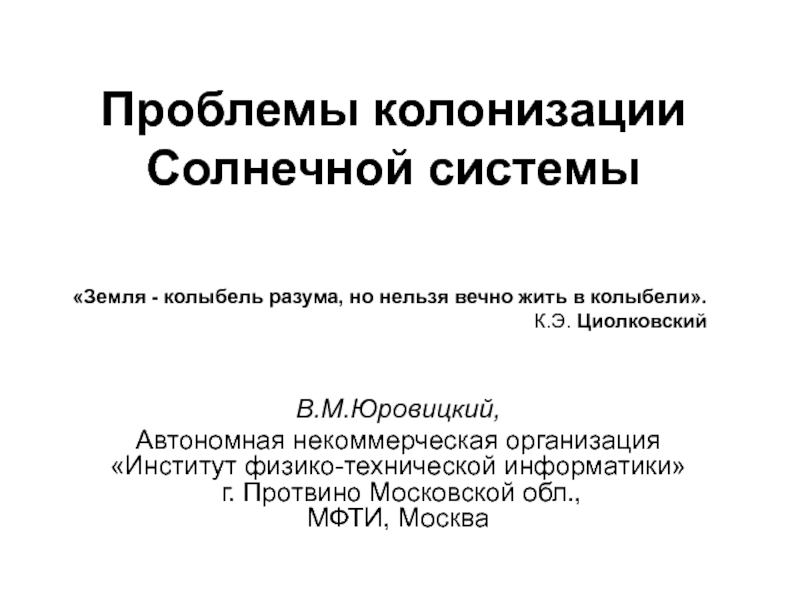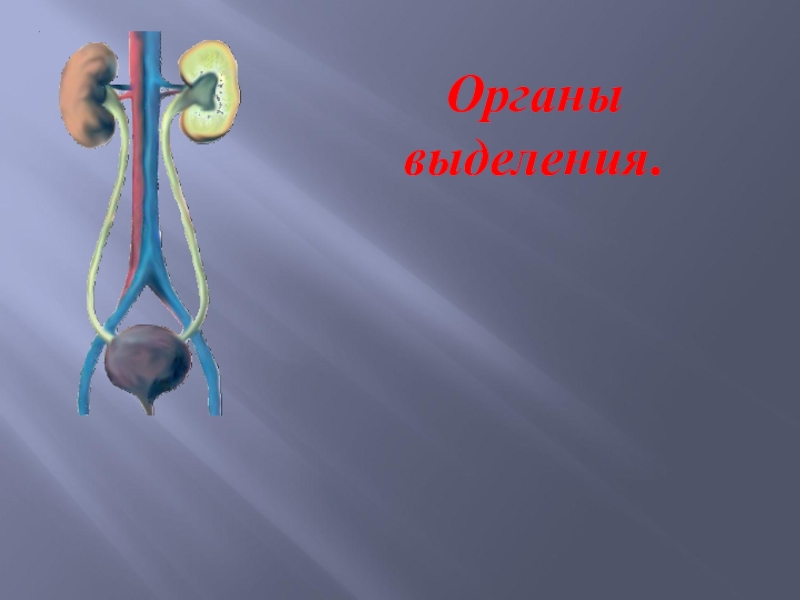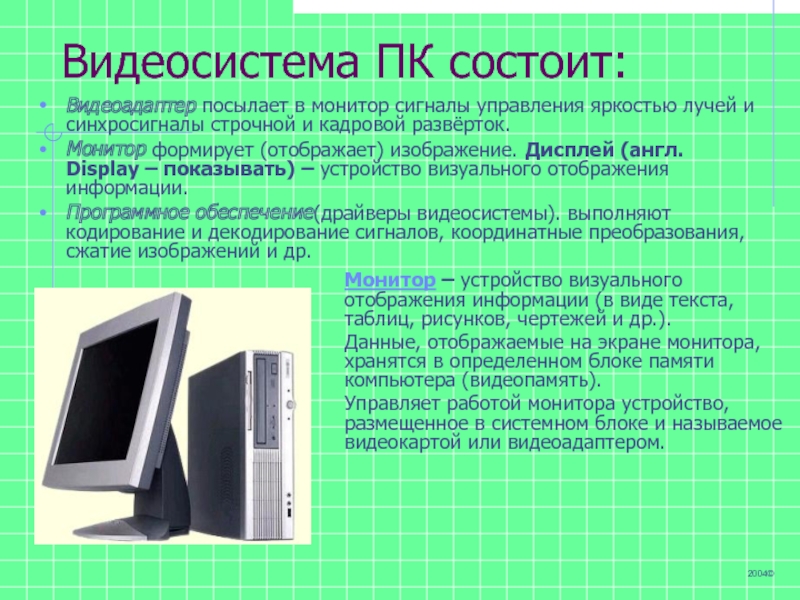Разделы презентаций
- Разное
- Английский язык
- Астрономия
- Алгебра
- Биология
- География
- Геометрия
- Детские презентации
- Информатика
- История
- Литература
- Математика
- Медицина
- Менеджмент
- Музыка
- МХК
- Немецкий язык
- ОБЖ
- Обществознание
- Окружающий мир
- Педагогика
- Русский язык
- Технология
- Физика
- Философия
- Химия
- Шаблоны, картинки для презентаций
- Экология
- Экономика
- Юриспруденция
С haracteristics of Chemical power sources (CPS)
Содержание
- 1. С haracteristics of Chemical power sources (CPS)
- 2. The following battery characteristics must be taken
- 3. 1. TypeSee primary and secondary batteries page.
- 4. 2. VoltageThe theoretical standard cell voltage can
- 5. 3. The Charge/Discharge CurveThe measured terminal voltage
- 6. 4. CapacityThe theoretical capacity of a battery
- 7. 5. Energy Density (By Weight and Volume)
- 8. Слайд 8
- 9. 6. Temperature dependence The rate of decrease
- 10. 7. Service lifeBatteries can also be subjected
- 11. 8. Self DischargeSelf-discharge (which occurs in all
- 12. Слайд 12
- 13. Скачать презентанцию
Слайды и текст этой презентации
Слайд 2The following battery characteristics must be taken into consideration when
selecting a battery:
Слайд 42. Voltage
The theoretical standard cell voltage can be determined from
the electrochemical series using Eo values:
Eo (cathodic) – Eo (anodic) = Eo (cell)
The open circuit voltage
(OCV), U0Напряжение разомкнутой цепи
(эксперим.)
ЭДС – электродвижущая сила
(теоретиич.)
Слайд 53. The Charge/Discharge Curve
The measured terminal voltage of any battery
will vary as it is charged and discharged (see Figure
1).The MPV (mid-point voltage) is the nominal voltage of the cell during charge or discharge. The maximum and minimum voltage excursion from the nominal value is an important design consideration: a "flatter“ discharge curve means less voltage variation that the design must tolerate.
When peak charged, the actual cell voltage will be higher than the MPV. When nearing the EODV (end of discharge voltage) point, the cell voltage will be less than the MPV. The EODV is sometimes referred to as the EOL (end of life) voltage by manufacturers.
Слайд 64. Capacity
The theoretical capacity of a battery is the quantity
of electricity involved in the electro-chemical reaction. It is denoted
Q and is given by:where x = number of moles of reaction, n = number of electrons transferred per mole of reaction and F = Faraday's constant.
The capacity is usually given in terms of mass, not the number of moles:
where Mr = Molecular Mass. This gives the capacity in units of Ampere-hours per gram (Ah/g).
Емкость элемента – это количество электричества, которое
химический источник тока отдает при разряде
C = I . (А . ч, если элемент разряжается током I (A) в течение (ч))
Слайд 75. Energy Density (By Weight and Volume)
The energy density
of a battery is generally expressed in two ways (see
Figure 2).The gravimetric energy density of a battery is a measure of how much energy a battery contains in comparison to its weight, and is typically expressed in Watt-hours/kilogram (W-hr/kg).
The volumetric energy density of a battery is a measure of how much energy a battery contains in comparison to its volume, and is typically expressed in Watt-hours/liter (W-hr/l).
Слайд 96. Temperature dependence
The rate of decrease of voltage with increasing
discharge will also be higher at lower temperatures, as will
the capacity- this is illustrated by the following graph:Слайд 107. Service life
Batteries can also be subjected to premature death
by:
Over-charging
Over-discharging
Short circuiting
Drawing more current than it was designed to produce
extreme
temperaturesphysical shock or vibrations
Metallic dendrites
(battery death due to aging)

